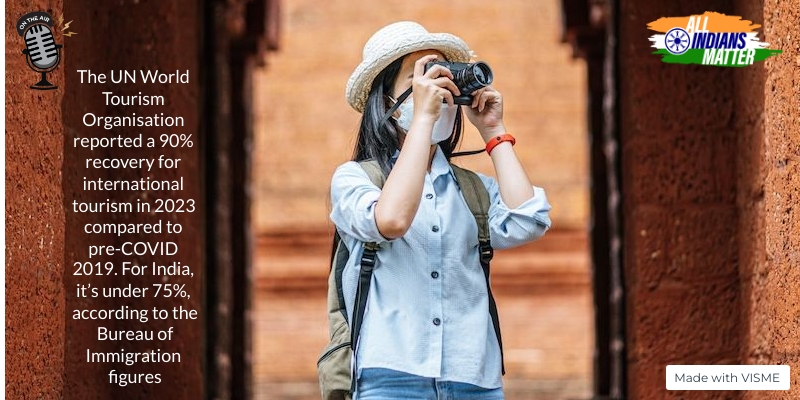Ashraf Engineer
May 14, 2022
Hello and welcome to All Indians Matter. I am Ashraf Engineer.
It’s been a cruel, cruel summer. Satellite images showed that surface land temperatures exceeded 60 degrees Celsius in some parts of North India at the peak of the heatwave we experienced, raising concerns about how people would be impacted. The highest land temperatures were recorded in Rajasthan, Gujarat, Telangana, Punjab and Madhya Pradesh. This spike is in line with climate change predictions. In fact, the Intergovernmental Panel on Climate Change had warned that heatwaves and humidity would be more intense and frequent in South Asia this century. India’s intense heat is deadly for its poorest people, such as daily wage and farm workers, street vendors and the homeless. How do heatwaves affect the human body and who is most vulnerable?
SIGNATURE TUNE
Let’s first talk about how heat builds up over a region. When an area of high pressure persists, a ‘heat dome’ is created, trapping warm air underneath – like when you put a lid on a bubbling pot. India experienced exactly such a heat dome, making temperatures soar well over 40 degrees Celsius and sparking concerns over food supply.
Farmers in the wheat-producing states of Haryana, Punjab and Uttar Pradesh watched helplessly as their fields shrivelled. It couldn’t have come at a worse time – fuel and food supplies are under strain because of Russia’s invasion of Ukraine, Indonesia’s ban on the export of palm oil and agriculture stress in different parts of the world.
Such intense heat can last a long time, significantly impacting society and dramatically raising population exposure to it. Globally, too, such extreme temperature events are increasing in frequency and duration. Between 2000 and 2016, for instance, the number of people exposed to heatwaves is thought to have increased by 125 million.
And its effects are amplified in cities because of urban heat islands. An urban heat island is a city area that is significantly warmer than its surrounding rural areas due to human activities. They occur when cities replace natural land cover with dense concentrations of pavements, buildings and other surfaces that absorb and retain heat. Naturally, this increases energy costs, air pollution and heat-related illnesses and deaths.
Such heatwaves burden health and emergency services, and heighten the strain on water, energy and transportation, which could result in power shortages and blackouts – all of which we’ve observed in India over the past few weeks. If crops and livestock perish, food and livelihood security are in jeopardy too.
Sadly, people’s exposure to heat is increasing due to climate transformation and this is unlikely to change soon. This has wide-ranging impacts on the human body. Extended high-temperature exposure creates physiological stress, which exacerbates the top causes of death such as respiratory and heart diseases, diabetes and renal failure. Heatwaves can also trigger public health emergencies, leading to socioeconomic impacts in the form of lost productivity and jobs. If power shortages persist, they can also cause loss of health service delivery.
While heatwaves affect us all, some sections of society are more vulnerable. These include senior citizens, infants and children, pregnant women, outdoor and manual workers, and the poor
As heat gain rises, it compromises the body’s ability to regulate temperature and can result in cramps, heat exhaustion, heatstroke and hyperthermia. Other symptoms include swelling of the limbs, rashes, headaches, irritability, lethargy and weakness. Heat can also cause severe dehydration and contribute to thrombogenesis or blood clots. That could rapidly escalate to hospitalisation, death and an accelerated progress of chronic conditions such as cerebrovascular disease and diabetes-related ones.
There is an indirect effect too. High heat can alter human behaviour and raise transmission levels of diseases. The scale and nature of this depends on the timing, intensity and duration of a temperature event, the adaptability of the population, infrastructure and institutions.
So, how do we manage these impacts? We must invest in reducing climate change now and draw up climate-health adaptation and preparedness programmes. Reducing emissions of heat-trapping gases like CO2 will help protect our health by reducing the damage on our climate systems. Active modes of transport like walking or cycling can reduce traffic-related air pollution and the physical activity has great health benefits in the form of less obesity, heart disease and diabetes incidence.
There are measures local governments can take too. Heatwave early-warning systems can suggest early protective actions. These include the creation of cooling centres, where the public can gather for relief from the heat. Staying hydrated is critical, so, easy access to drinking water fountains will help too.
Construction regulations that insist on energy efficiency would mean fewer emissions and more protection. For example, roofs with plant cover – known as green roofs – and shade trees can reduce indoor temperatures. Urban forests comprising local varieties of trees are a good hedge against urban heat islands, significantly lowering temperatures.
All of us have suffered from the extreme heat over the past few weeks. Now there are reports that there’s another wave coming. That’s bad news and it’s time for us to take the actions needed to counter the problem. That time is now.
Thank you all for listening. Please visit allindiansmatter.in for more columns and audio podcasts. You can follow me on Twitter at @AshrafEngineer and @AllIndiansCount. Search for the All Indians Matter page on Facebook. On Instagram, the handle is @AllIndiansMatter. Email me at editor@www.allindiansmatter.in. Catch you again soon.






